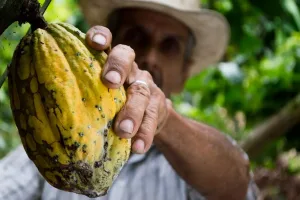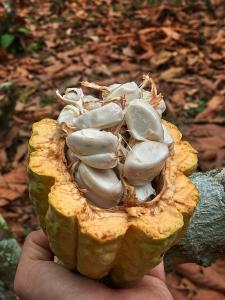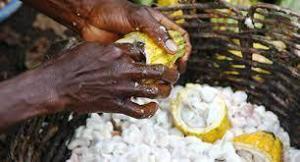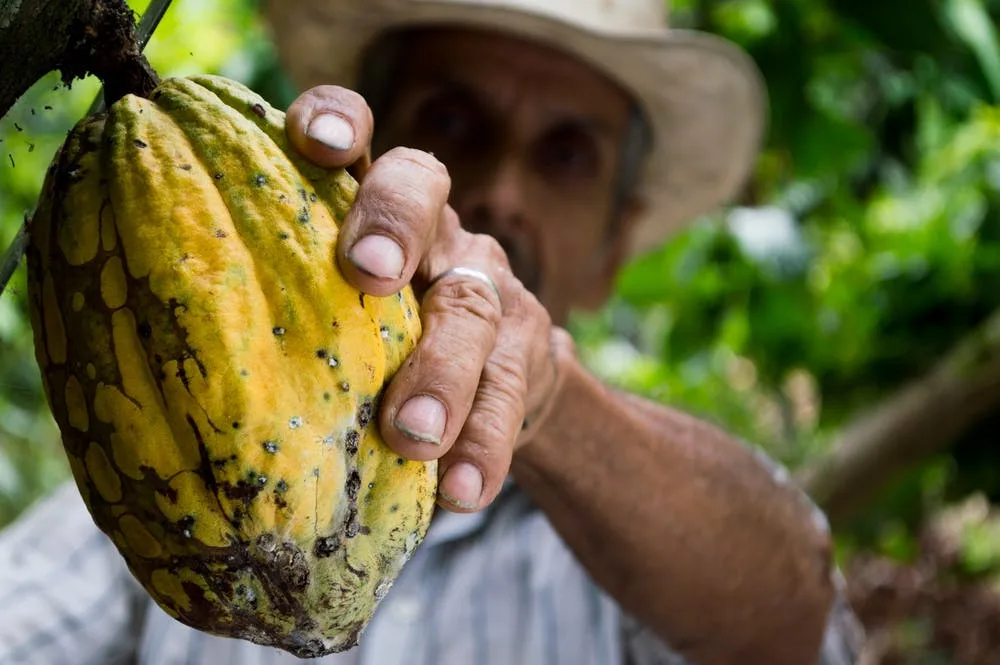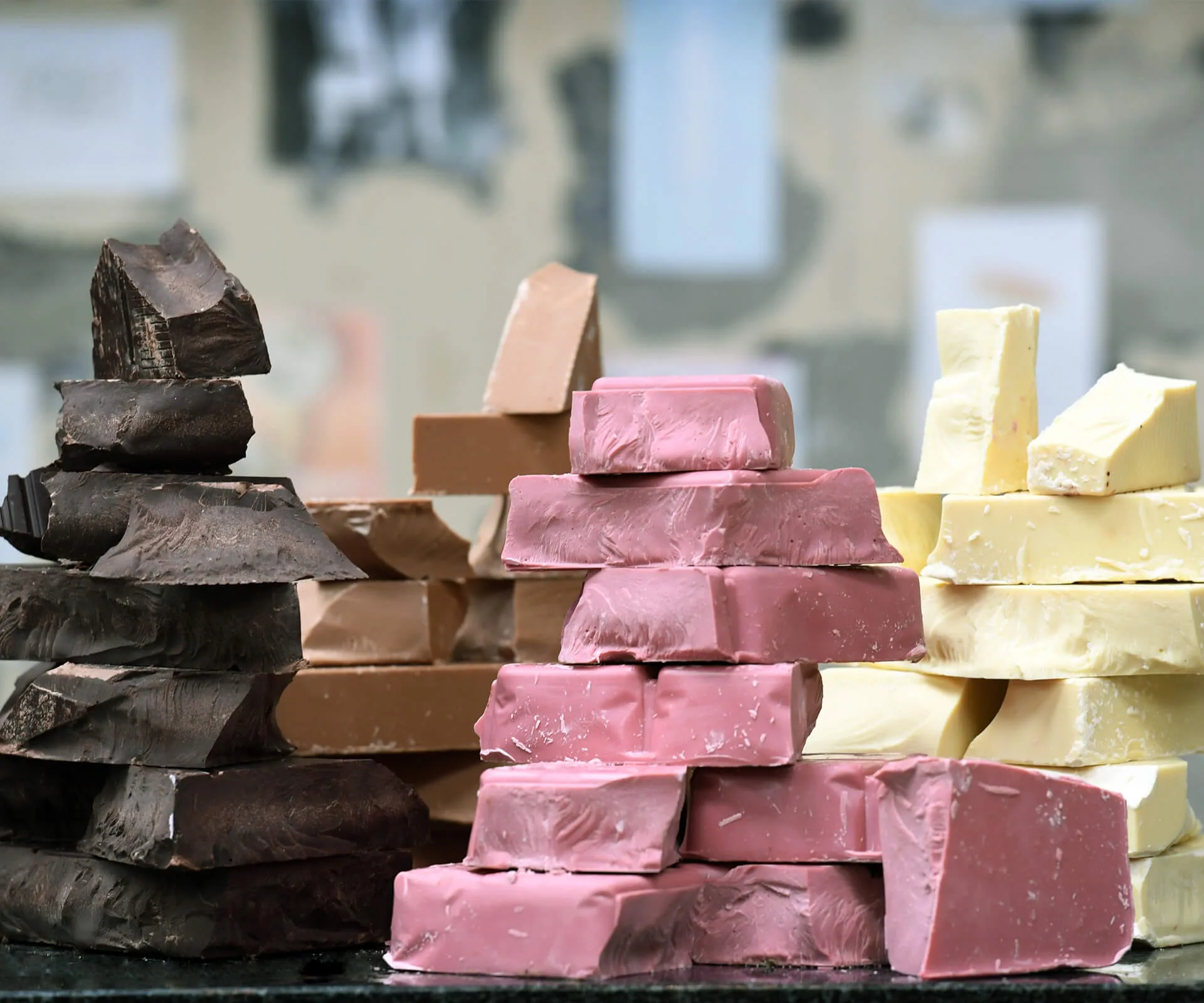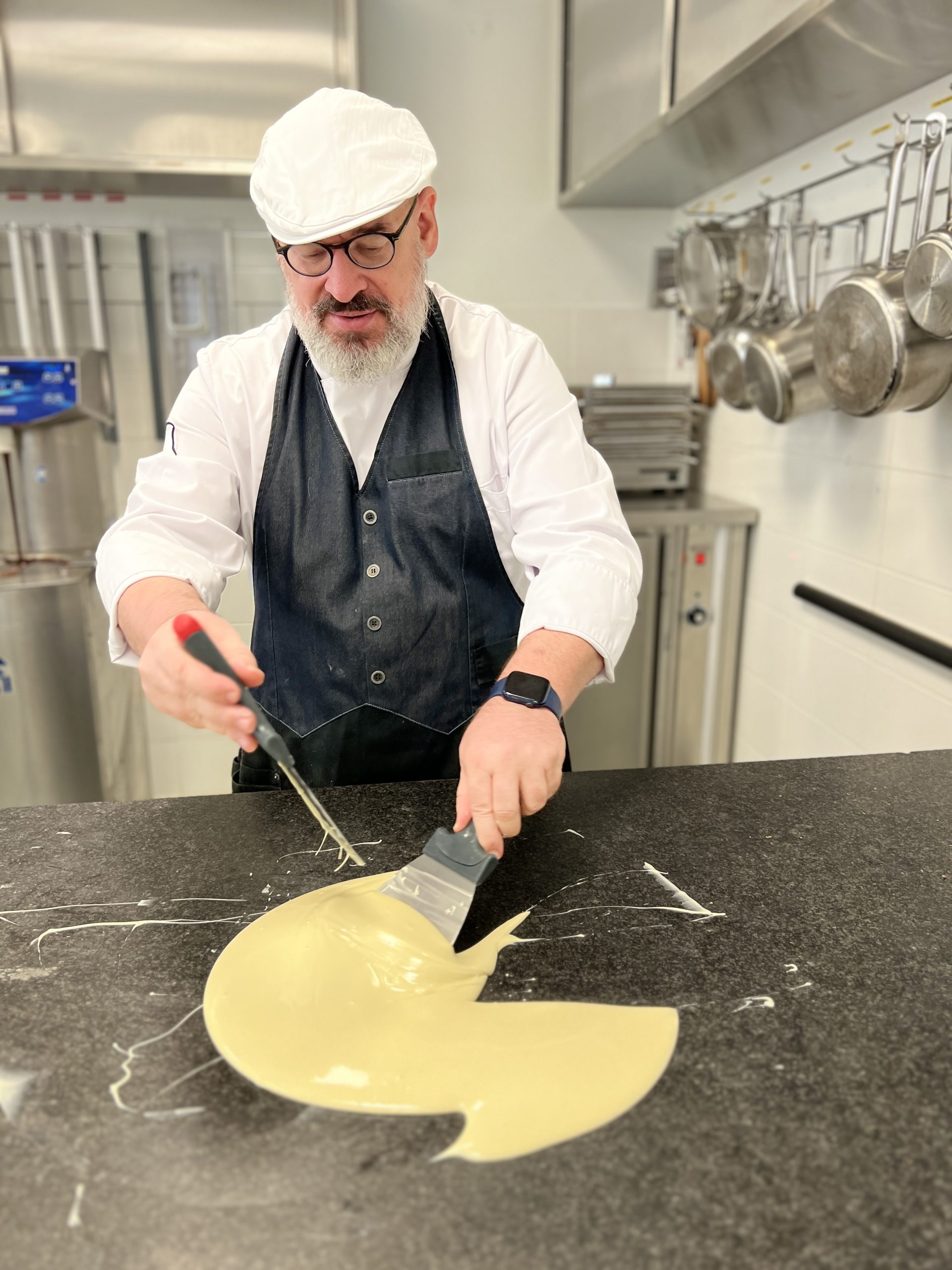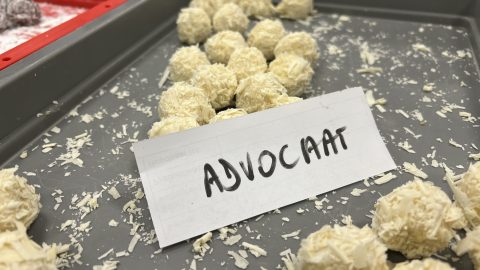Instructions
Oogsten van Cacaobonen:
- Rijpheid Controleren – Voordat de oogst begint, moeten de cacaovruchten zorgvuldig worden geïnspecteerd om ervoor te zorgen dat ze volledig rijp zijn. Rijpe vruchten hebben een diepere kleur en zijn zachter.
- Handmatig plukken – Meestal worden de cacaovruchten met de hand geplukt om beschadiging van de bonen te voorkomen. Dit is een arbeidsintensief proces.
- Openen van de Vruchten – De cacaovruchten worden geopend, meestal met behulp van een machete, om de cacaobonen en het pulp eruit te halen.
Fermentatie
- Pulp en Bonen Samenvoegen – De cacaobonen worden samen met de pulp in bakken of manden gedaan. De pulp helpt bij de fermentatie.
- Bedekken en Stapelen – De bakken of manden met cacaobonen en pulp worden bedekt met bananenbladeren of ander materiaal om ze af te sluiten van de lucht.
- Fermentatie Tijd – De fermentatietijd varieert, maar het kan enkele dagen tot een week duren. Tijdens deze periode ontwikkelen zich complexe smaken en aroma’s.
- Temperatuur en Beluchting Controleren – Tijdens de fermentatie moeten de temperatuur en beluchting worden gecontroleerd om de kwaliteit van de bonen te waarborgen.
- Dagelijkse Controles – Gedurende het fermentatieproces worden de bonen regelmatig geïnspecteerd om te bepalen wanneer ze voldoende zijn gefermenteerd.
Drogen
- Drogen – Na fermentatie worden de bonen gedroogd in de zon om vocht te verminderen en de houdbaarheid te verbeteren voordat ze worden verder verwerkt.
Van cacaoboon naar cacaomassa
- De gedroogde bonen worden gereinigd – voorgebrand – gebroken & ontdopt. Wat overblijft noemt men nibs.
- De nips worden nogmaals gebrand en dit process is bepalend voor de uiteindelijke smaak. Hier kan een fabrikant dus extra kleur- en smaakstoffen toevoegen om de smaak van de cacaostukjes (nibs) te optimaliseren.
- De nibs worden gemalen tot cacaomassa.
Cacaomassa persen
- De cacaomassa wordt geperst om het vet (cacaoboter) eruit te verwijderen. Wat overblijft is een cacaokoek die vermalen wordt tot cacaopoeder.
Basis ingrediënten chocolade
- En zo bekomen we twee basis ingrediënten voor chocolade : cacapopoeder en cacaoboter. Samen met suiker en melkpoeder hebben we dan de 4 ingrediënten van chocolade opgesomd.
Tried this recipe?Let us know how it was!

